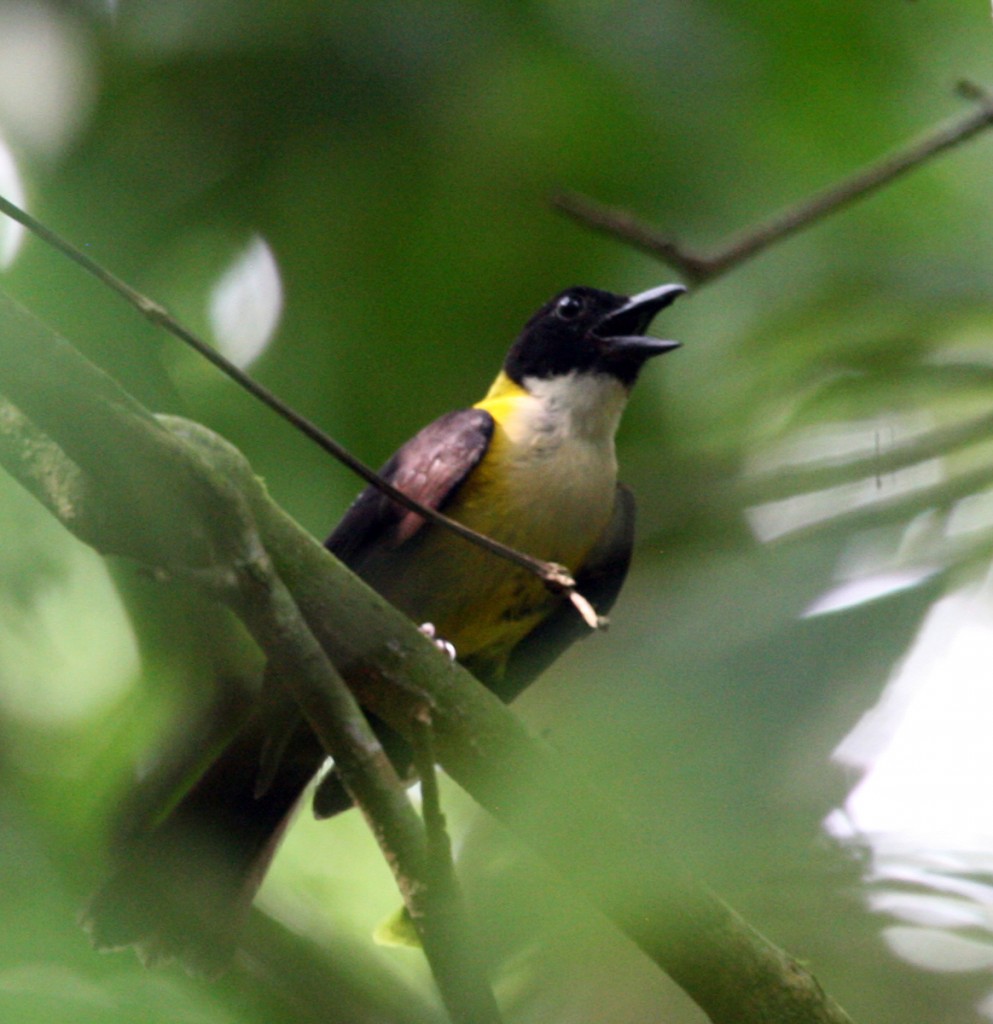Browsing through Costa Rica photos this evening, I came across this one of what I think is a White-throated Shrike-Tanager (Lanio leucothorax). Similar in appearance to orioles, there are two varieties of the species in the country: one that lives closer to the Caribbean with a yellow rump and undertail coverts (the feathers beneath the tail), and another, like this one, with black rump and undertail coverts that lives on the south-Pacific coast. This male of the species, belting out his call, was photographed on the Osa Peninsula.
All media is copyright costaricawildlife.net, 2013.










